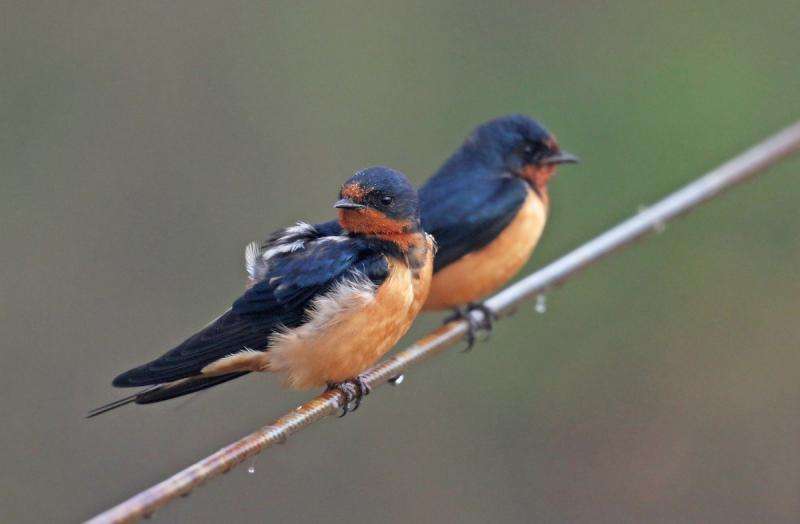Barn swallow behavior shift may be evolutionary

Most of our understanding about evolutionary changes and the formation of new animal species is based on the historical record. But a relatively new population of barn swallows in Argentina may help scientists see those changes firsthand.
The ubiquitous barn swallow, found on every continent except Antarctica, is a wondrous migrator. The barn swallows of North America journey over 12,000 miles in migrations as far south as Argentina and back every year. They breed in the north, then winter in the south, following a six-month cycle of movements dictated by the changing seasons.
David Winkler, professor of ecology and evolutionary biology in the College of Agriculture and Life Sciences, and his collaborators say a new population of barn swallows near Buenos Aires, established only about 30 years ago, has adapted both its migration cycle and its breeding cycle in a dramatically short time.
The birds in this population have shortened their migrations by more than a third, traveling only to the equator for winter, then back down to Argentina to breed. The birds were tracked using software developed at Cornell.
"This population of barn swallows has dramatically changed its annual migration and its annual cycle, both recently. It raises questions about what mechanisms are behind changes in these characteristics," Winkler said. "Most biologists are conditioned to think that changes this extreme must be a result of some drastic change that necessitates adaptation, via natural selection over many generations, but that doesn't seem to be the case here. And when a change like this occurs so rapidly, we have to ask, how much of this could be changed by individuals in a single lifetime?"
Winkler and his colleagues have found evidence that some northern-born swallows are still migrating south and joining the new population to breed in Argentina, rather than returning north.
"There are certainly ecological differences between the northern and Argentine breeding grounds, which could select for genetic differences in the birds," Winkler said. "But immigrants from North America likely continue to bring in northern genes, slowing any sort of genetic selection on the Argentine population."
Nevertheless, the researchers speculate that the Argentine population could be a step toward a new subspecies of barn swallow. The mechanisms that are driving these barn swallows' migration behaviors and life cycle timing may be similar to those that drove skuas and terns in the past: Both are seabirds with far-northern and far-southern sister-species pairs.
"Rather than interpret this new swallow population as a mere oddity, this colonization may be the initial phase of an evolutionary process," Winkler said.
Likely the biggest factor that's made Argentina more inviting for barn swallows is the expansion of human infrastructure over the past 50 years, he said. Barn swallows make their nests under bridges, building eaves and, yes, in barns.
"Barn swallows have adapted to people for many, many hundreds of years," Winkler said. "Well over 99 percent of the nests of barn swallows are in some kind of human-made structure."
Winkler and his colleagues studied the swallows' migration by capturing individual birds and outfitting them with solar-geolocation loggers. They looped flexible polymer string around each bird's legs and up around its back, where a knot fastened with a dab of superglue kept the trackers in place.
The findings were published March 16 in Current Biology. Co-authors include Cornell graduate student Marshall Iliff, and scientists in Argentina, Russia and Canada.
More information: David W. Winkler et al. Long-Distance Range Expansion and Rapid Adjustment of Migration in a Newly Established Population of Barn Swallows Breeding in Argentina, Current Biology (2017). DOI: 10.1016/j.cub.2017.03.006
Journal information: Current Biology
Provided by Cornell University





















